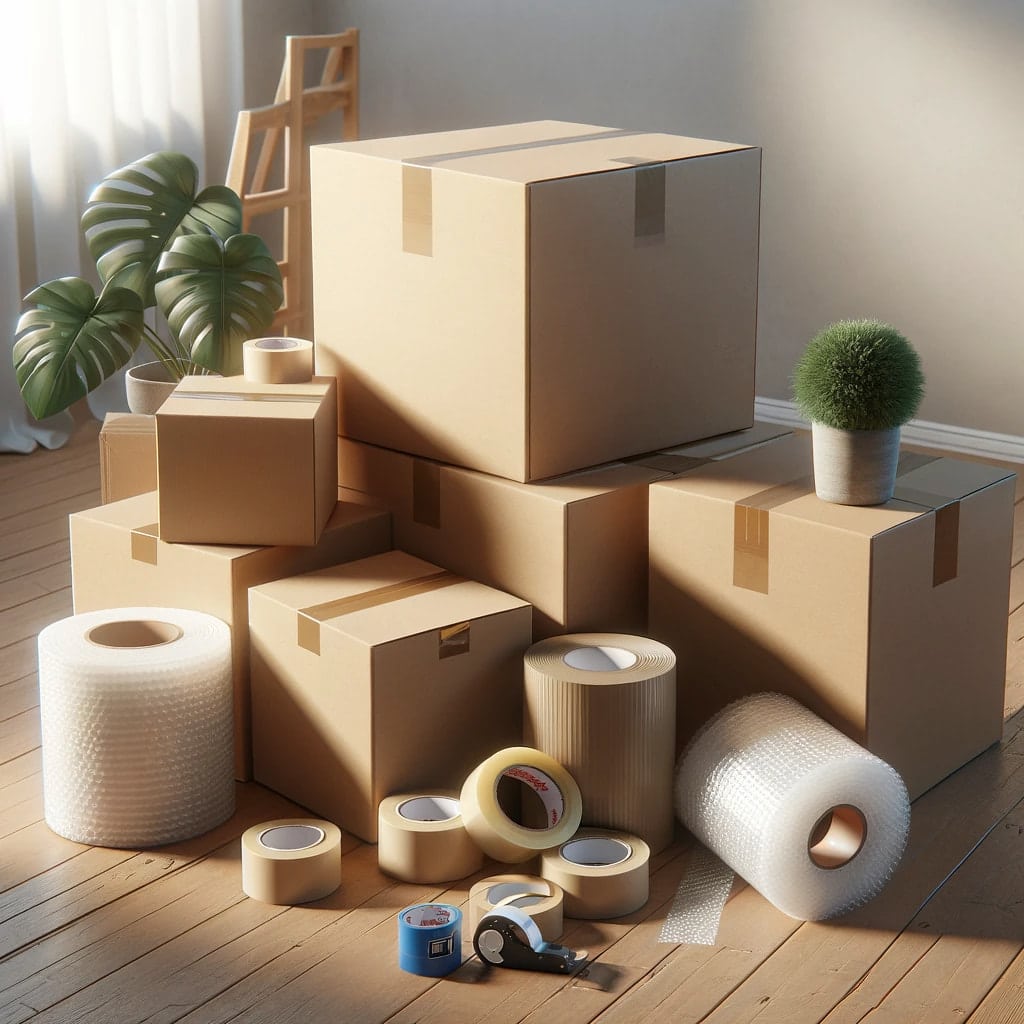Moving to a fresh home may be intimidating. The prospect of packing up your entire life into boxes may seem daunting, but don’t worry; you’re not alone on this journey. Our guide is intended to give you with detailed, expert-backed recommendations for moving and packing, making the transfer as simple as possible. We’ve tapped into the insights of experienced movers and organizers to provide you with dependable and practical assistance. This guide is your ally, ensuring that you are well prepared when moving day arrives. We’ll explain to you how to pack to move!
Why Trust Our Guide
Trust this guide’s strong foundation: AOA Moving Services, FMCSA licensed (#3843854), and expert-led. You can read more about us. Our hands-on packing and moving experience guarantees that you receive realistic, tried-and-true guidance for your relocation.
Before You Start: Pre-Move Planning
The Key to a Smooth Move: Early Planning
Beginning your relocation preparation three to four months in advance is critical. This early start helps you to manage the multiple activities involved without feeling rushed.
Your Pre-Move Checklist
To keep you on track, we’ve created a simple pre-move checklist:
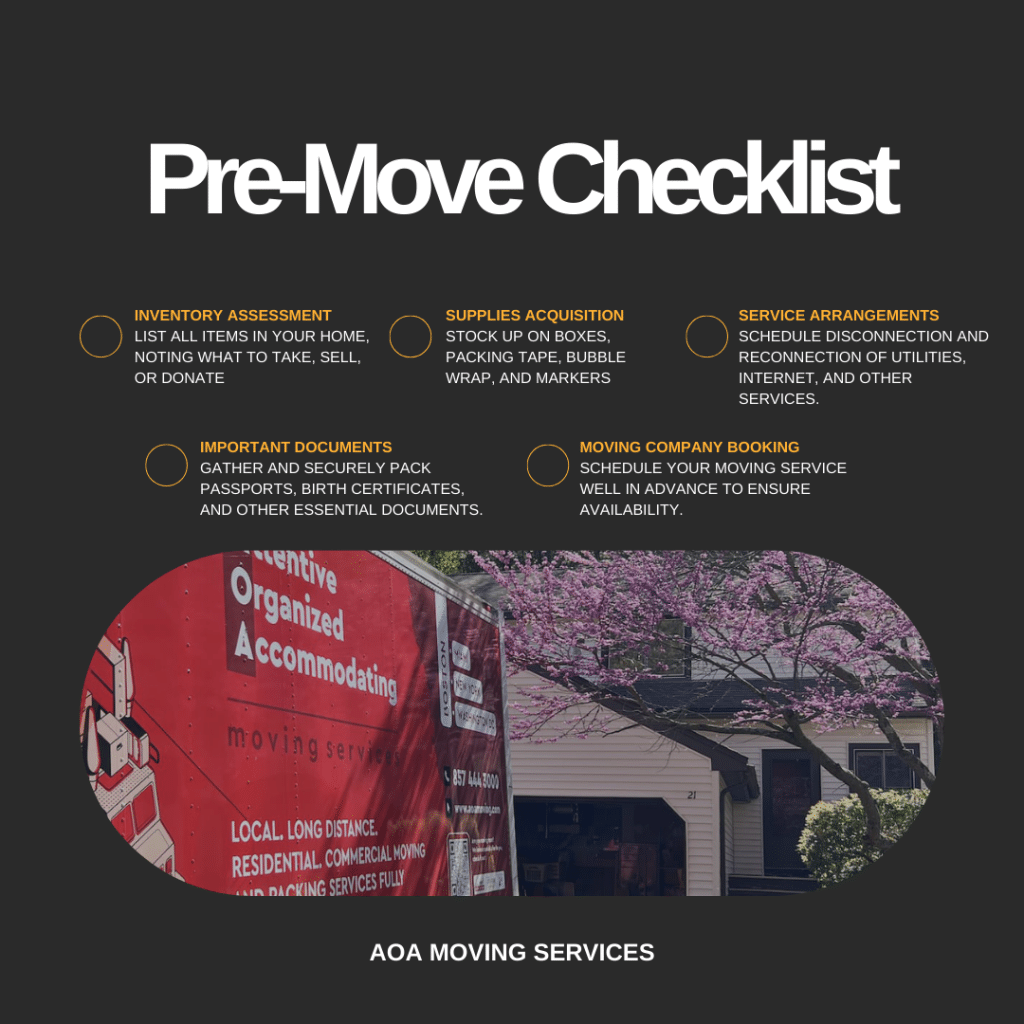
Decluttering
Decluttering is an essential phase in the moving process that may considerably save stress and costs. Our strategy is simple: if you haven’t used anything in a year, it’s probably not necessary. Delve deeper in some of ours packing tips for moving:
Room-by-Room Decluttering Tips
- Living Room: Focus on old magazines, unused electronics, and décor. Keep what adds value to your daily life.
- Kitchen: Evaluate seldom-used gadgets, duplicate items, and expired goods. Prioritize daily-use items.
- Bedrooms: Sort through clothes, shoes, and accessories. Keep what you love and wear; consider donating the rest.
- Bathrooms: Discard expired medications and skincare products. Keep essentials and frequently used items.
- Garage/Storage Areas: These spaces often accumulate the most clutter. Review tools, seasonal items, and stored belongings critically.
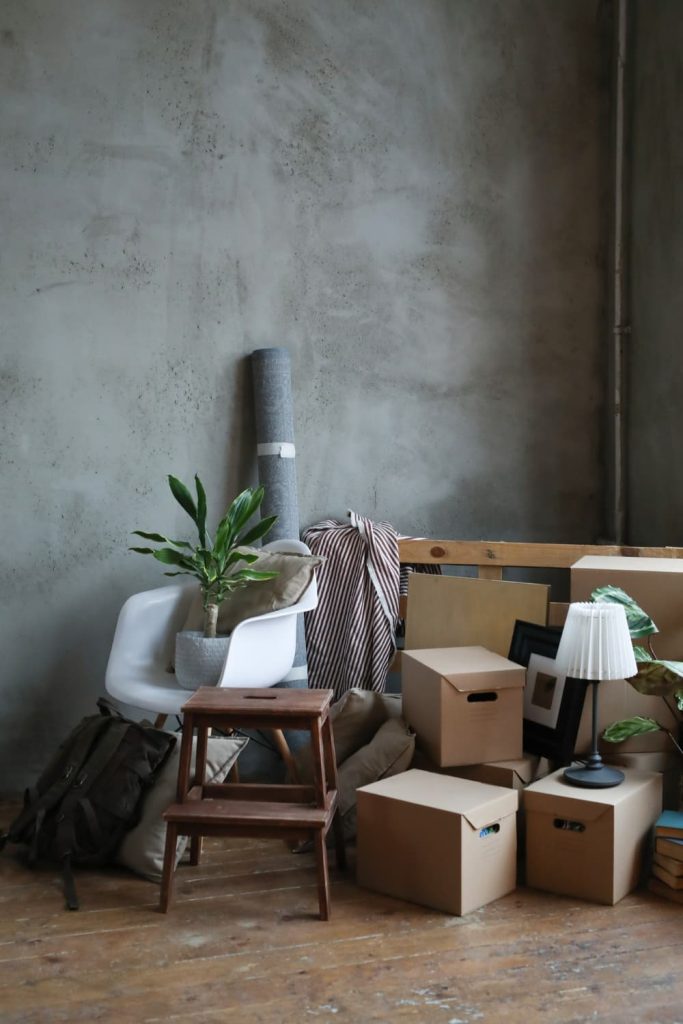
Decision Making: Keep, Sell, Donate, or Throw Away
- Keep: Items you use regularly or have significant sentimental value.
- Sell: Items in good condition that could be valuable to others.
- Donate: Items that are no longer of use to you but could benefit someone else.
- Throw Away: Items that are broken, damaged, or otherwise unusable.
A decluttered space not only makes packing easier but also gives you a fresh start in your new home.
Packing Supplies: What You Really Need
Choosing the correct packing equipment is critical to preserving your things. The table below outlines the needed materials, their usage, and eco-friendly alternatives:
| Supply | Use | Eco-Friendly Alternative |
| Moving Boxes | For packing most items like books and kitchenware. | Reusable plastic bins or boxes from local stores. |
| Bubble Wrap | Protecting fragile items during transit. | Biodegradable bubble wrap or repurposed newspapers/linens. |
| Packing Peanuts | Filling empty spaces in boxes to prevent item movement. | Starch-based biodegradable peanuts or crumpled paper. |
| Packing Tape | Securely sealing boxes. | Paper-based or plant-based adhesive tapes. |
| Labels/Markers | Identifying contents and room destination for each box. | Recycled paper labels or refillable markers. |
| Furniture Covers | Protecting furniture from scratches and dust. | Old blankets or reusable cloth covers. |
Room-by-Room Packing Guide
This section offers detailed moving packing tips for each room, ensuring a systematic and organized approach to your move. We will explain how to start packing to move and what to pack first when moving!
Kitchen
- Dishes and Glassware: Wrap each item individually in bubble wrap or packing paper. Place the heavier objects at the bottom of the box and the lighter stuff on the top.
- Pots and Pans: Place tiny pots into bigger ones and bind them together. To offer more cushioning, use towels or sheets.
- Appliances: Clean and dry all appliances. Use tape to secure any moving pieces or cables.
- Silverware and Utensils: Wrap silverware trays in plastic wrap and pack utensils in small boxes.
- Food Items: Pack only non-perishable items. Use airtight containers for grains and spices.

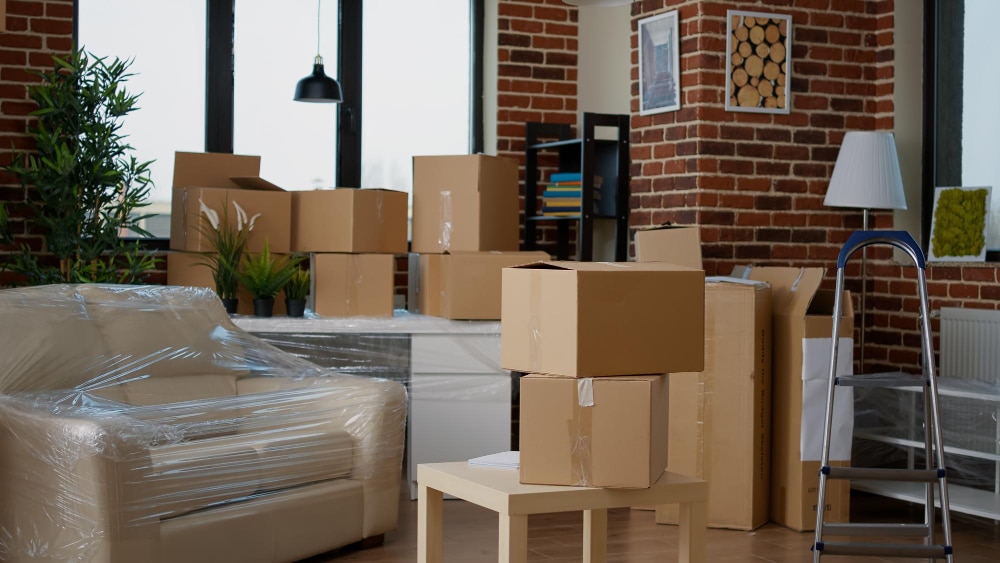
Bedroom
- Clothes: Use wardrobe boxes to hang clothing. Fold additional clothing and place them in bags or cartons.
- Bedding and Linens: To minimize space, pack these in big boxes or vacuum-sealable bags.
- Furniture: Disassemble beds and dressers, if practicable. Wrap the components with moving blankets or bubble wrap.
- Jewelry and Small Valuables: Keep these in a separate, properly labeled box for safety.
- Shoes: To keep them in shape, pack in their original boxes or wrap them separately.
Bathroom
- Toiletries: Pack caps in waterproof bags after sealing them with tape. If it is not absolutely required, don’t carry huge bottles.
- Medicines: Keep critical drugs in a separate box with a legible label.
- Towels and Bathmats: Use these to cushion other products or place them in their own box.
- Cleaning Supplies: Place these in a separate box. Ensure that the caps are properly shut and the bags are leakproof.
- Personal Items: Pack daily essentials in a readily accessible bag for quick usage following the transfer.
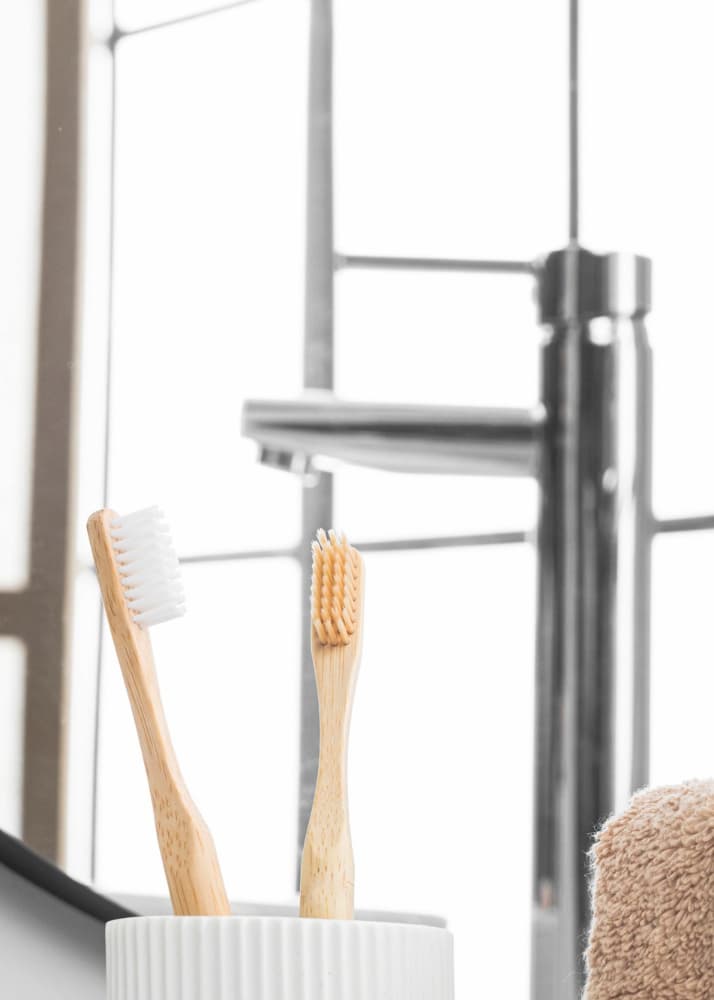

Living Room
- Books and DVDs: Pack these in tiny boxes to avoid them becoming too heavy.
- Decorations: Bubble wrap fragile things and place them in cushioned cartons.
- Furniture: Disassemble if possible and cover with blankets and cushioning.
- Lamps and Lighting: Remove the bulbs, dismantle if feasible, and package the lamp bases and shades individually.
- Curtains and Drapes: Fold and pack in wardrobe boxes to prevent wrinkles.

Home Office
- Documents and Files: Organize important papers into labeled folders and secure them in file boxes.
- Office Supplies: Pack pens, clips, and other small items in zip lock bags or small containers.
Garage and Outdoor Equipment
- Tools and Hardware: Pack in sturdy boxes. Wrap sharp tools in bubble wrap and secure loose parts.
- Garden Supplies: Clean and dry all equipment. Disassemble larger items if possible.
Electronics

Electronics Packing Tips
- Preparation: Before packing, back up important data from computers, tablets, and phones. Photograph the setup of your electronics for easier reassembly.
- Battery Removal: Remove batteries from remote controls, toys, and small electronics to prevent damage from leakage.
- Cord Management: Coil and label cords for each device. Use twist ties or zip ties to keep them organized.
Special Considerations
- Climate Sensitivity: Electronics are sensitive to temperature and humidity. Consider climate control options if storing them for an extended period.
- Insurance and Valuation: Ensure your electronics are covered by insurance, particularly high-value items.
Electronics Packing Instructions
- Computers and Laptops: Wrap monitors and laptops in anti-static bubble wrap. Secure them in boxes with plenty of padding to prevent movement.
- Televisions: If possible, pack in their original boxes with the original padding. Otherwise, wrap screens with anti-static bubble wrap and use sturdy boxes with extra cushioning.
- Audio Equipment and Speakers: Protect speakers by wrapping them in bubble wrap. Secure cords and remotes in a separate, clearly labeled bag.
- Gaming Consoles: Wrap consoles in bubble wrap, and place them in a box with padding. Pack games and accessories in the same box if possible.
- Printers and Scanners: Remove cartridges and secure lids. Wrap in bubble wrap and pack in a box with sufficient padding.
- Small Appliances: For microwaves, coffee makers, and other small appliances, wrap in bubble wrap and pack in boxes with crumpled packing paper to avoid shifting.
Fragile Items
- Vases and Ceramics: Stuff with packing paper and wrap each item individually.
- Lamps and Delicate Lighting Fixtures: Disassemble and pack components separately with ample padding.
What not to Pack when Moving
- Hazardous Materials: Avoid packing anything flammable, explosive, or corrosive. This includes items like paint, aerosols, propane tanks, and certain cleaners.
- Perishable Food: Don’t pack perishable food items that can spoil, leak, or attract pests during the move.
- Plants: Some moving companies don’t transport plants, and certain states have regulations against bringing in plants to prevent the spread of pests. We at AOA Moving Services handle individual situations. Contact us to clarify everything!
- Sensitive Documents and Valuables: Keep important documents, cash, jewelry, and family heirlooms with you; don’t pack them in moving boxes.
- Medications and First Aid: Always keep necessary medications and a basic first aid kit accessible, especially for long-distance moves.
- Pets and Pet Supplies: Make special arrangements for moving pets. Avoid packing their essentials like food, bowls, and carriers in the moving truck.
Special Packing Situations
Every step has distinct obstacles. This section focuses on specific circumstances such as long-distance moves, fast moves, downsizing, and family migration.
🚚 Long-Distance Moves
- Inventory Accuracy: Maintain a detailed inventory list. This is crucial for tracking during long transit.
- Extra Protection: Use additional padding for items. Long-distance moves can be rougher on your belongings.
- Essentials Kit: Prepare a box of essentials that will travel with you, including clothes, toiletries, and important documents.
⏱️ Quick Moves
- Time Management: Create a packing schedule, dedicating a specific time for each room.
- Simplified Sorting: Limit sorting to ‘keep’ and ‘discard’ to expedite the process.
- Moving Services: Consider full-service movers who can pack and move quickly. Take a look on our packing and urgent moves services!
➡️ Downsizing
- Space Planning: Understand the space limitations of your new home. Measure large furniture to ensure it fits.
- Declutter Rigorously: Be more aggressive in decluttering. Focus on what you truly need and use.
- Storage Solutions: If needed, rent a storage unit for items you can’t part with but won’t fit in your new space.
👨👩👧👦 Family Relocations
- Kid–Friendly Planning: Involve children in the packing process, giving them tasks and responsibilities.
- Special Items: Pack a separate box of children’s favorite toys, books, and blankets to comfort them during the transition.
- School Records and Documents: Ensure all necessary school records and medical documents are easily accessible.
Final Checklist and Moving Day Tips
As moving day approaches, having a last checklist and some practical tips will help make the process go much more smoothly. Here’s everything you’ll need to make everything run well.
Final Review Checklist
- Inventory Check: Ensure all boxes are accounted for and labeled with contents and destination room.
- Essentials Bag: Pack a bag with items you’ll need immediately at your new home, like toiletries, medications, chargers, and a change of clothes.
- Important Documents: Keep passports, legal documents, and moving paperwork in a safe, easily accessible place.
- Final Home Walkthrough: Do a final sweep of the house to check for any forgotten items.
- Utility Check: Confirm that all utilities are set up at your new home and scheduled for disconnection at your current one after your move.
Moving Day Tips
- Early Start: Begin the day early to maximize your time.
- Dress Comfortably: Wear comfortable clothing and sturdy shoes.
- Stay Hydrated and Energized: Have water bottles and snacks on hand.
- Clear Pathways: Ensure all walkways and doorways are clear for safe and efficient movement.
- Final Check with Movers: Go over details with the moving team, confirming the new address and where each box goes.
- Stress Management: Take deep breaths and breaks when needed. Moving is a marathon, not a sprint.
Remember, being prepared and organized is key to a smooth moving day. With this final checklist and these tips, you’re set for a successful move.
Conclusion: Starting Off in Your New Home
Congratulations on successfully moving into your new home! As you begin this exciting new chapter, here are some suggestions to help you unpack and settle in comfortably.
Unpacking and Settling In
- Prioritize Rooms: Start with essential rooms like the bedroom and kitchen. This approach helps in quickly setting up functional spaces.
- Unpack Systematically: Unpack one box at a time, fully putting away its contents before moving to the next.
- Familiarize with the Neighborhood: Take time to explore your new community. Locating nearby stores, parks, and amenities can make you feel more at home.
- Personalize Your Space: Hang pictures, set up decorations, and arrange furniture to reflect your style. It’s these personal touches that transform a house into a home.
- Rest and Relax: Remember, not everything needs to be unpacked in one day. Give yourself time to relax and adjust to your new surroundings.
FAQ Section
How to Pack Efficiently for a Move?
Answer: Begin by decluttering to limit the quantity of goods you have to pack. Then, make a packing timetable, working on one room at a time. Use high-quality packing materials and label each box with the contents and room it belongs to. Pack goods you use less frequently first.
How to Pack for a Move in 3 Days?
Answer: When packing for a three-day relocation, prioritize essentials. Pack a separate bag for immediate necessities, then rapidly categorize goods as «keep», «discard», or «give». To save time, store clothing in wardrobe boxes and stow goods in their existing storage containers.
How to Pack Fragile Items for a Move?
Answer: Begin by wrapping each fragile item separately in bubble wrap or packing paper. To prevent movement, use robust boxes and cover any vacant spots with crumpled paper or foam peanuts. Heavier things should be placed near the bottom. Label these boxes as «Fragile» and load them aboard the moving truck so they don’t be smashed.
How to Pack Efficiently for a Move?
Answer: Begin by decluttering to limit the quantity of goods you have to pack. Then, make a packing timetable, working on one room at a time. Use high-quality packing materials and label each box with the contents and room it belongs to. Pack goods you use less frequently first.
